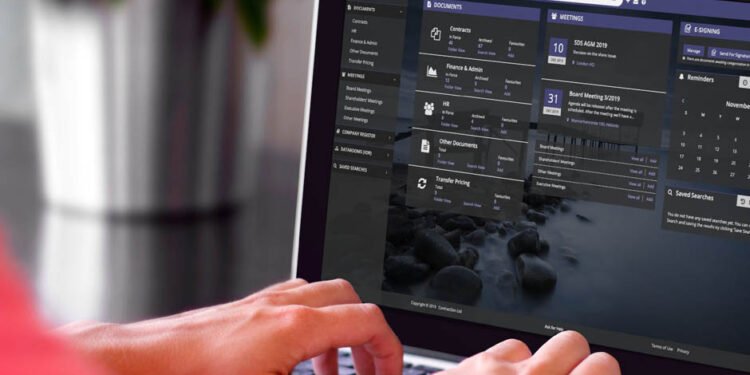Successful companies in today’s fast-paced market work together. However, there are major security dangers with the old ways of transmitting sensitive information. Here is where VDR software comes in, completely changing the game for companies when it comes to safely collaborating and sharing data.
What are Virtual Data Rooms?
Virtual data room is a secure digital repository that is employed to distribute and store documents under the condition of restricted access. In addition to financial transactions, mergers and acquisitions, and legal proceedings, they are frequently employed in other sensitive business operations. To protect sensitive data, VDR software provides advanced security features, including encryption, access controls, and audit traces.
Benefits of VDR Software in Secure Collaboration
Collaboration across enterprises and countries must be smooth in today’s linked business community. According to Angelo Dean, CEO of datarooms.org, “Virtual data room software has transformed the due diligence process, making it faster, more efficient, and highly secure.”
Nevertheless, it may be rather challenging to guarantee the security of critical data throughout these relationships. When it comes to protecting sensitive information while facilitating collaboration, virtual data room software provides a safe and feature-rich platform:
- Data Security. To protect sensitive data both in transit and at rest, virtual data rooms make use of strong encryption technologies, access restrictions, and user authentication procedures. This reduces the possibility of breaches, leaks, or unwanted access, encouraging confidence and trust among partners.
- Streamlined Collaboration. Without the need for email attachments or risky file-sharing services, VDRs provide a single repository for document organization, storage, and sharing. Virtual data room providers encourage effective information flow, streamline collaboration, and increase document visibility.
- Granular Access Control. To make sure that only authorized individuals can see or change certain documents, executives may set up granular access rights for individual users or groups using VDRs. The possibility of inadvertent disclosure or improper use of private data is reduced thanks to this fine control.
- Audit Trails and Activity Tracking. VDRs have thorough audit trails that record every action taken by users on the platform, including downloading, editing, and accessing documents. Regulatory compliance, accountability, and transparency are made easier by this thorough documentation.
- Secure Communication Channels. Secure communication methods, including encrypted messaging or video conferencing, are often integrated into virtual data rooms, enabling collaborators to discuss confidential subjects inside of a secure environment. This lowers the possibility of data breaches and does away with the necessity for insecure communication methods.
- Disaster Recovery. Data backup and disaster recovery are two features that virtual data rooms usually provide, making sure that important data is still available even in the case of unplanned interruptions. This protection for business continuity reduces possible losses and downtime.
- Cost-Effectiveness. VDRs may be less expensive than more conventional document management techniques like physical data rooms. They facilitate more productive teamwork processes by doing away with the need for physical storage, printing, and courier services.
By leveraging the comprehensive dataroom benefits outlined above, businesses can foster trust, streamline workflows, and achieve their collaboration goals with greater confidence.
Integration with Business Operations
The smooth integration of VDR software with current corporate processes is one of its main benefits. Through integration with project management tools, customer relationship management (CRM) systems, or accounting software, data room providers may improve departmental cooperation and enable remote work and international collaboration.
Regulatory Compliance
Businesses working in regulated sectors must adhere to regulatory standards such as GDPR, HIPAA, and SOX. Ensuring compliance is made easier for enterprises by VDR software, which offers features like audit trails, data encryption, and access restrictions that prove compliance with regulations and shield against legal ramifications.
User Experience and Interface Design
The user experience and interface design of VDR software are critical success factors and determinants of adoption. User contentment and output can be significantly improved through the implementation of a collaborative interface that is both aesthetically pleasing and well-structured.
Conclusion
To sum up, virtual data room software is transforming how companies work together and safely exchange critical information. With its user-friendly interfaces, smooth integration with current systems, and cutting-edge security features, VDR software is a great tool for any company that is trying to improve productivity and expedite collaboration procedures.












